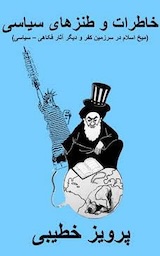The New Yorker:
The philosopher and gender theorist has been denounced, demonized, even burned in effigy. They have a theory about that.
By Parul Sehgal
In January, the American philosopher Judith Butler and the South African artist William Kentridge took part in a public conversation in Paris about atrocity and its representations. Before an audience at the École Normale Supérieure, they spoke for nearly two hours, in lulling abstraction and murmured mutual regard: Can we give the image the benefit of the doubt? What is the role of the object in thinking? After the event, a woman—a philosopher herself—approached Butler. Tight with tension, she gripped Butler by the arm.
“Vous menacez mes enfants,” she said, in Butler’s recounting. “You are threatening my children.”
Butler has regularly required personal security. In 2012, the city of Frankfurt awarded them the Theodor W. Adorno Prize for their contributions to philosophy. (Butler recently adopted they/them pronouns but doesn’t “police it.”) The general secretary of the Central Council of Jews in Germany decried the decision to give the award, named for a philosopher of Jewish descent who fled the Nazis, to a “well-known hater of Israel.” A demonstration was organized. Butler, a prominent critic of Zionism, responded by citing their education in a Jewish ethical tradition, which compelled them to speak in the face of injustice.
Their academic work on gender from the nineteen-nineties, albeit in distorted form, has incited recurrent waves of fury. From Eastern Europe to South America, right-wing groups have portrayed Butler as not merely one of the founders of “gender theory” but a founder of “gender” itself—gender framed as the elevation of trans and gay rights and the undermining of the traditional family. In 2017, while travelling in Brazil, where they had helped organize a conference on democracy, Butler was met by protesters holding placards depicting them with devil horns. They burned a puppet bearing a witch’s hat, a pink bra, and a photograph of Butler’s face—a “gender monster,” Butler called it. At the airport, a fight broke out when a protester tried to attack Butler and a bystander intervened.
Go to link










Comments